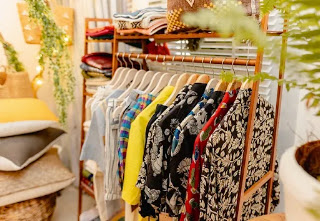Clothing is far more than a necessity; it is an extension of ourselves, a way to express our identities, communicate status, and connect with others. Throughout history, the evolution of clothing has mirrored the social, political, and cultural changes of the times, from the regal garments of royalty to the casual styles that dominate modern fashion. Today, clothing represents a blend of artistry, functionality, and individuality. Let's explore how fashion has evolved and its lasting impact on society.
### **Fashion as Expression**
One of the most compelling aspects of clothing is its ability to serve as a medium for self-expression. The choices we make in terms of style, color, fabric, and fit often tell others who we are or what we stand for. Whether it’s a simple outfit or a bold fashion statement, clothes speak volumes before we even say a word. Think of the iconic little black dress, a staple that exudes elegance and simplicity, or the oversized hoodie, a symbol of comfort and casual rebellion.
In today’s world, fashion is often about *individuality*. Social media platforms like Instagram and TikTok have turned everyday people into influencers, inspiring new trends and making fashion more accessible. The rise of streetwear, for example, has blurred the lines between high fashion and everyday clothing, with brands like Supreme and Off-White taking cues from youth culture and the urban landscape.
### **Clothing and Identity**
The connection between clothing and identity runs deep. In many cultures, attire plays a significant role in defining gender, social class, profession, and even political affiliation. For example, uniforms are used to represent authority or membership in an organization, while certain colors or styles are linked to particular cultural or religious practices.
In modern fashion, identity has expanded beyond traditional gender norms. Designers are increasingly creating gender-neutral collections, and clothing has become a more fluid way of presenting oneself, no longer bound by rigid categories. This shift reflects a larger societal move toward inclusivity and the acknowledgment of diverse gender expressions.
### **Fashion and Sustainability**
While fashion is often associated with luxury and extravagance, it is also a powerful industry that impacts the environment in profound ways. Fast fashion, which prioritizes rapid production and low-cost garments, has led to significant environmental degradation. The textile industry is one of the largest polluters globally, responsible for massive water consumption, waste, and greenhouse gas emissions.
As awareness of these environmental challenges grows, sustainable fashion is gaining momentum. Brands are now focusing on ethical practices, using eco-friendly materials, and supporting fair trade. Slow fashion advocates encourage consumers to invest in high-quality, timeless pieces rather than following fleeting trends. The goal is to reduce waste and support a more sustainable, responsible clothing industry.
### **The Future of Fashion**
Looking ahead, the future of clothing will likely be shaped by technology, sustainability, and a continued focus on individuality. Innovations like 3D printing, smart fabrics, and AI-powered design are already influencing the way clothes are made and consumed. Wearable tech, such as clothing that can monitor your health or adapt to different weather conditions, may soon become mainstream.
Fashion will also continue to break down barriers, allowing people to experiment with new ideas and express themselves more freely. We may see more emphasis on sustainability, as well as a shift towards circular fashion, where garments are recycled and repurposed to minimize waste.
### **Conclusion**
Clothing is an ever-evolving art form that serves as a reflection of who we are and how we see the world. From its functional origins to its current status as a symbol of identity, creativity, and culture, fashion remains a significant part of our lives. As we move toward a more sustainable and inclusive future, the choices we make in fashion can have a lasting impact—not only on the way we present ourselves but also on the planet we call home.
As the saying goes, “Dress for the job you want,” but in today’s world, clothing can be so much more—it’s an expression of personality, a tool for change, and a powerful force for sustainability and creativity.







0 Comments